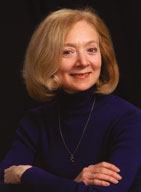Shabbat in Puerto Rico challenges notion of ‘Jewish look’
Published November 17, 2010
Every one of my friends who read Kathryn Stockett’s “The Help” told me it was impossible to put the book down. Not only was it a wonderful read, but they said I would find it especially compelling because it’s about African American maids working for white families in Jackson, Miss. during the 1960s. That’s the same period when I was growing up in Memphis, just some 200 miles away.
My mother, who moved there from New York City in the 1940s when she married my Memphian father, was appalled by what she found. She used to tell me how shocked she was to see separate bathrooms, separate water fountains, and rules forcing blacks to sit in the back of the bus. The color of your skin, just like your religion, should not make a difference, she would say. And as Jews, we should particularly be sensitive to discrimination. Shvartzer, the Yiddish equivalent of the “n” word, was absolutely forbidden in our house.
Yet, we, like many other white families living in the South, did have African American “help” when my brother and I were children. I just pray that none of the wonderful women who helped care for us ever experienced any mistreatment at our hands.
My pals were correct in predicting that I would have trouble closing “The Help.” The book was especially poignant because I finished reading it during a recent vacation in Puerto Rico, where I stayed at the home of friends rather than at a touristy beach hotel. In fact, there were few tourists in many of the places we went, and I was clearly an oddity with my blonde wavy hair, blue eyes and pale skin.
The difference was particularly noticeable when I went to a Saturday morning Shabbat service in San Juan. One of my goals during the trip was to attend a Sephardic synagogue, something I had never experienced. Although I’ve been to Spain twice, Ferdinand and Isabella did quite a job of getting rid of Jews and I found it very difficult to find operating synagogues in the cities that I visited. But I had higher hopes for Puerto Rico, which has the largest Jewish community in the Caribbean.
I ended up going to a Reform temple called Beth Shalom in the Condado section of San Juan. I was quickly intercepted by Luis Sánchez, a friendly congregant who wears many hats at the temple including the title on his business card “Security Supervisor.” Not that I exactly look like a terrorist, but it was pretty clear I wasn’t a regular.
Luis began telling me about the history of the temple, which was started in 1967, and he showed me a book called “300 Years in the Jewish Caribbean,” by Harry Ezratty. The book explains that many of Beth Shalom’s members claim a Marrano heritage with links to Spanish ancestors who were forced to convert from Judaism to Catholicism during the Inquisition. Some entire Beth Shalom families, according to the book, have converted back to Judaism.
Although I’ve attended services at many different shuls and temples on the U.S. mainland, it seems that many congregants have similar Ashkenazi facial features and coloring regardless of what city I’ve been in. Sure there are exceptions, but sometimes I almost do double takes at Brith Sholom Kneseth Israel thinking I see one of my late aunts from Memphis or a cousin from Pennsylvania. But this was a totally different experience. I didn’t see anybody who looked familiar.
And if I found their straight dark hair and palette of skin tones unusual, can you imagine what they thought of me with my frizzy hair, which thanks to the Puerto Rican humidity, had ballooned into a huge ball of honey colored cotton candy?
I’m sure I didn’t look any more Jewish to them than they did to me. But what does “Jewish” look like?
As my mother used to say, color shouldn’t matter.
And in this case, it really didn’t. My conversation with Luis ended when his wife approached me saying I was needed in the sanctuary.
There were only nine congregants. My skin could have just as well been purple and my hair green. I was number 10 and I made the minyan.
Dor to Dor
Gail Appleson is a writer for Armstrong Teasdale LLP and freelancer who lives in St. Louis.
“Dor to Dor,” is an intermittent Jewish Light series looking at various aspects of “grown-up” life and generational connections through the lens of Jewish writers living in the St. Louis area. If you are interested in contributing to Dor to Dor, please email [email protected].
















